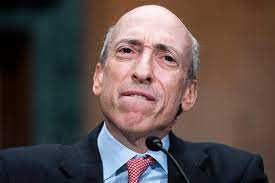Members of the United States House of Representatives have recently embarked on a mission to remove Securities and Exchange Commission (SEC) Chair Gary Gensler from his position.
However, the process is far from straightforward, as the legality of such an action is subject to several complexities.
Key Points:
- Ohio Rep. Warren Davidson’s SEC Stabilization Act: On June 12, Rep. Davidson introduced the SEC Stabilization Act with the aim of firing Chair Gensler, citing alleged misconduct and abuse of power. However, removing an independent agency official appointed by the U.S. president and confirmed by the Senate poses significant legal challenges.
- The Limitations on Presidential Authority: While U.S. presidents have some influence over the SEC, their ability to directly terminate a commissioner is restricted. A Supreme Court decision in 2010 determined that commissioners could only be removed by the president under specific circumstances, including inefficiency, neglect of duty, or malfeasance.
- Differences in Tenure: Unlike some officials who serve “at the pleasure of the president,” SEC commissioners have fixed terms. Chair Gensler’s term, which began in April 2021, is expected to last until 2026, adding an additional layer of complexity to his potential removal.
- Congressional Authority: Members of Congress possess the power to expel fellow lawmakers with a two-thirds majority vote. However, utilizing this approach to remove an SEC chair is exceedingly rare, having been employed only 20 times in the entire history of the United States.
- Gensler’s Controversial Stance on Cryptocurrencies: Chair Gensler’s recent actions, including the SEC’s lawsuits against major cryptocurrency exchanges Binance and Coinbase for offering unregistered securities, have sparked significant backlash. The commission’s classification of approximately 68 cryptocurrencies as unregistered securities has drawn criticism from both the crypto community and lawmakers alike.



